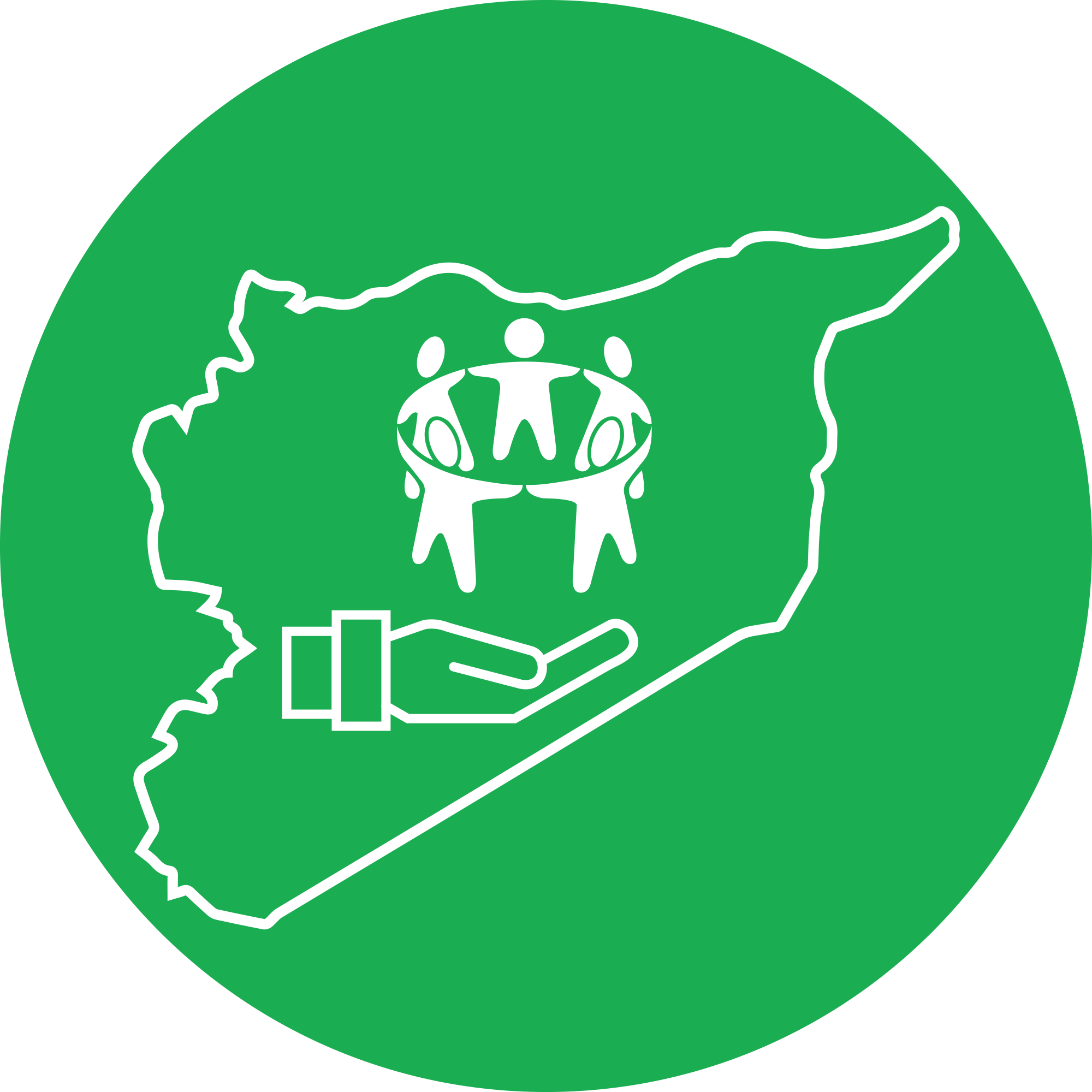Repost from Refugee Hosts
Efforts to bring local faith actors (LFAs) into the wider humanitarian apparatus have been a key aim of the localisation of aid agenda. In this piece, Olivia Wilkinson (Director of Research of Refugee Hosts’ research partner, the Joint Learning Initiative on Faith & Local Communities) argues that there is a need to ensure that such engagements provide space for LFAs to remain faith actors, while also aligning them with international humanitarian principles. This requires us to reflect on the histories and values underpinning humanitarian principles, as well as the agency, complexity and nuance of local faith actors and refugees. For suggested readings on this theme, see the reading list at the end of this article, as well as our ongoing series, Contextualising the Localisation of Aid Agenda, for more.
When Local Faith Actors Meet Localisation: Understanding the Space between the International and the Local in relation to Humanitarian Principles and Religion
By Olivia Wilkinson, Trinity College Dublin and JLI Director of Research
In late 2016, the Joint Learning Initiative’s Refugee and Forced Migration Learning Hub -a Hub co-chaired by Refugee Hosts’ PI, Dr. Elena Fiddian-Qasmiyeh and Islamic Relief’s Sadia Kidwai – began scoping out what is known about the place of religion in refugee response. The overarching project was split into two studies: the first analysing religion and refugees in regards to localisation and urbanisation, in recognition that refugees increasingly live outside camp settings and that local faith actors (LFAs) are active in aiding refugees in urban settings; and the second to examine the stages and spaces of refugee experience in relation to religion, to understand the moments at which religion and religious actors play a role in the trajectory of refugee journeys and the places in which these interactions happen. The first part of the scoping study was launched in October 2017 at the “Localizing Humanitarian Response Forum: The Role of Religious and Faith-Based Organizations” in Sri Lanka, which Estella Carpi wrote about in an earlier post in this series. The second part of the study will be launched towards the end of this year.
Echoing Estella’s post, in addition to other pieces published on Refugee Hosts (here, here and here), the study speaks to the opportunities and challenges of engaging with local religious actors in refugee response. The state of the art literature review and the interviews with key experts that underpinned the study found that religion adds immediate complexity to the localisation debate, often in ways that can be controversial and are therefore sidelined. While we found a multitude of ways in which local religious actors provide services for refugees, it is a struggle to find mention of these actors in any of the main documents tied to the localisation of aid (see page 14 of the report for some examples). While the Comprehensive Refugee Response Framework (CRRF) includes faith-based organisations (FBOs) as stakeholders, the specificities of LFAs in their different contexts requires detailed analysis that is not included in the use of the broad-brush term, “FBO”.
The challenges faced in engaging local faith actors in refugee response are not new just because localisation is the current buzzword. The reasons why LFAs are not more involved in international humanitarian response for refugees have always been the same: religious actors can be party to the conflicts that drive forced migration; they can be partial in their assistance, prioritizing those of the same faith and overlooking those of other faiths; they can enforce cultural and gendered stereotypes; they proselytize, using their assistance to convert vulnerable people to their religion; and they are overburdened and lack the capacity to comply with humanitarian standards. Some of these points are common to other local actors as they are politically and socially embedded and equally lacking in capacity to keep up with the demands of international humanitarian donors.
Yet LFAs continue to respond to refugees around the world, including in urban environments. If we are to believe in the earnestness of the call to localise from the international humanitarian community, then this must naturally include LFAs. To be involved in localisation, LFAs must overcome, and international actors must equally find ways to overcome, these barriers so that equal partnerships can develop.
From the research, there were several examples of ways in which these challenges were encountered, yet had been, to greater and lesser extents, overcome. To dive in the deep end, it is often held that for LFAs to be fully inducted into the international humanitarian community, they must not proselytise their faith. This standard is of course crucial, allowing humanitarian actors to ensure that assistance is given freely and without conditions.
The literature paints a more nuanced picture however. First, it is often dangerous, or highly disadvantageous to convert. In research from Kaoues in Lebanon, it was found that Muslim converts to Christianity were doubly rejected, both from the Muslim refugee population of which they had previously been part, and the Lebanese Christians in their new religious community. This demonstrates that in many cases the short-term material benefits linked to conversion are soon outweighed by the social disadvantages. In particular, this example shows the important need to recognise the intersections of ‘minority’ and ‘majority’, and how this is ‘read’ and ‘ascribed’ by observers on the basis of ethnicity and other identity markers.
Second, local religious leaders are not necessarily playing a short-term numbers game to gain converts, but aiming to build prolonged relationships within their broader community. In comparison to short term missionary trips from various external countries, local religious leaders embedded in communities do not want to pressure people to convert through their assistance, as noted by research from Kraft, also in Lebanon.
Finally, as Elena Fiddian-Qasmiyeh has pointed out in much of her research, the agency of beneficiaries has been overlooked. In the Sahrawi refugee camps (in Southwest Algeria), she found that refugees’ political representatives, “mobilized religiously-related claims to maximize diverse short- and long-term benefits both inside and outside the camps,” accessing both material resources and the political support provided by Evangelical American actors in the camps and in the USA.
While this demonstrates a need to recognise the complexity of proselytisation and the nuances of the contexts in which it takes place, it does not do away with the fundamental concern of faith actors tying their assistance to conversion. Most of our interviewees reported having seen or heard about such practices. However, interviewees also explained the ways in which they had still managed to successfully partner with LFAs who had initially included types of proselytisation in their assistance. One interviewee described a negotiation with a local faith actor in which they held a meeting with refugees about their religion, but only after all distributions had been made so that attendance was a choice and not tied to assistance. In their opinion, the method maintained dignity on both sides, recognising that the refugees and local faith community involved in distribution were able to uphold their identities without compromising the distribution. This was a one-off solution, but in another example from the Lebanese Society for Education and Social Development (LSESD), they conducted training on humanitarian principles for LFAs. They reported some initial missteps in explaining the concepts behind the humanitarian principles to LFAs and described how they had learned that specific examples were more effective than providing an abstract description of concepts such as impartiality and neutrality.
On one hand, there is the fear that LFAs will be “NGO-ised” through the localization agenda, to the point that they lose any identity as faith actors, becoming instrumentalised sub-contractors for international humanitarian organisations instead.
On the other hand, there are sensitive ways to conduct trainings that allow organisations to remain faith actors, while also aligning them with international humanitarian principles. This element of complexity in engagement with LFAs shows that international humanitarian organisations must be committed to capacity building in humanitarian principles, standards, and compliance with LFAs, while recognising the agency of refugees and LFAs to interact around and about their faiths, without assuming it is proselytization.
*
Featured Image: Baddawi refugee camp in North Lebanon has been hosting refugees from Syria since the outbreak of the conflict. The Masjid al-Quds mosque – in the background – is at the geographical and metaphorical core of the camp. Masjid al-Quds overlooks the cemetery, the camp’s ultimate shared space in life and death for new and established refugees alike. (c) E. Fiddian-Qasmiyeh
*
For more readings on the themes explored in this piece
click here for the Refugee Hosts Faith and Displacement series, here for other contributions to our Refugee Hosts ‘Contextualising the Localisation of Aid‘ blog series
Recommended readings:
Ager, J., Fiddian-Qasmiyeh, E. and Ager, A. (2015) ‘Local Faith Communities and the Promotion of Resilience in Contexts of Humanitarian Crisis’, Journal of Refugee Studies, 28(2): 202-221. *Open access until July 2018*
Carpi, E. (2017) “Does Faith-Based Aid Provision always Localise Aid?”
Fiddian-Qasmiyeh, E. (2017) “Gender, Religion and Humanitarian Responses to Refugees”
Fiddian-Qasmiyeh, E. and Ager, A. (eds) (2013) Local Faith Communities and the promotion of resilience in humanitarian situations, RSC/JLI Working Paper 90, Oxford: Refugee Studies Centre, February 2013.
Kidwai, S. (2017) “Engaging with Faith Values to Reshape Responses to the Global Forced Migration Crisis”
Kidwai, S. and Fiddian-Qasmiyeh, E. (2017) “Seeking Evidence to Provide Protection: How Can Local Faith Communities Support Refugees?
Rowlands, A. (2017) “Faith and Displacement: Beyond the Faith-Secular Divide? An Introduction to the Series”
Svoboda, E. (2018) ‘Humanitarian Access and the Role of Local Organisations’
Trotta, S. (2017) “Faith-Based Humanitarian Corridors to Italy: A Safe and Legal Route to Refuge”
Wilkinson, O. (2017) “Reflection and Connection: Religious Celebration in Times of Crisis”






